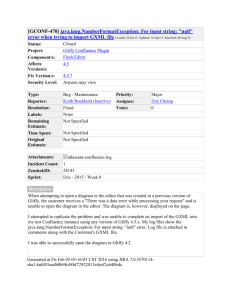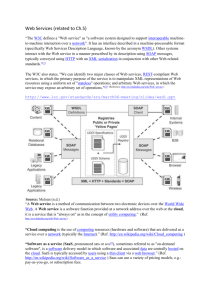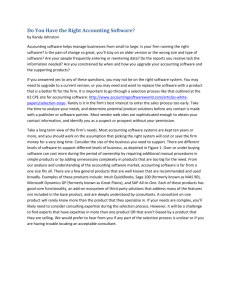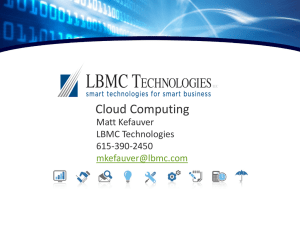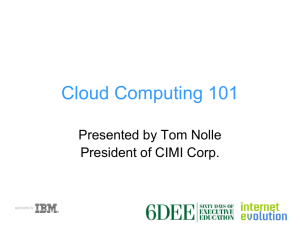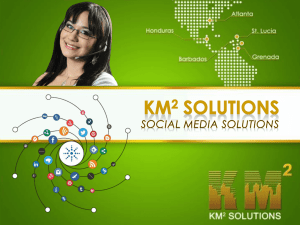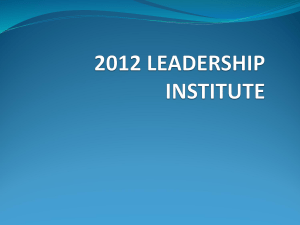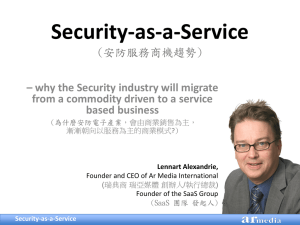Web 2.0, Cloud Computing and the Impact
advertisement
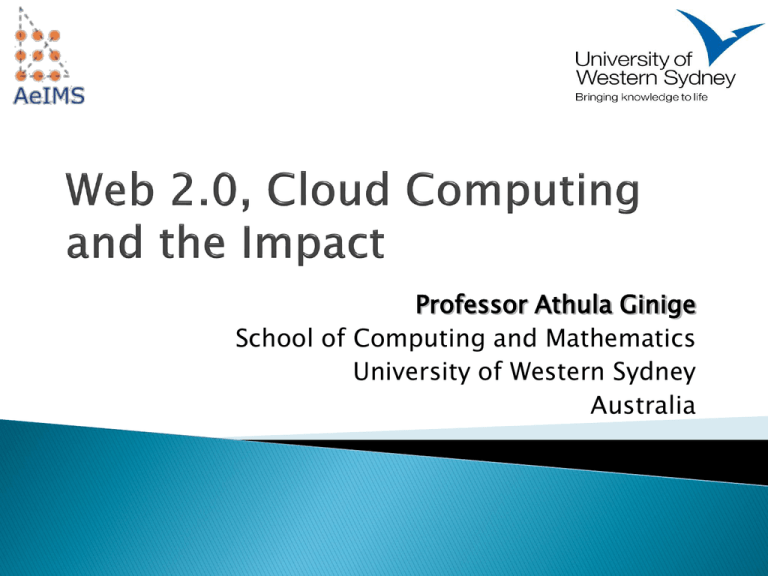
Professor Athula Ginige School of Computing and Mathematics University of Western Sydney Australia I like to acknowledge Prof. Dr. Gottfried Vossen of University of Münster, Germany for sharing some of his Web 2 slides which I have used in this presentation. WEB 2.0 User Participation Socialization Functionality Data Collections Net Infrastructure (“Flat World”) Cloud Computing WEB 2.0 User Participation Socialization Functionality Data Collections Net Infrastructure (“Flat World”) WEB 2.0 Net Infrastructure: Huge improvements in speed, bandwidth, availability, and reliability over the past 10 years Broadband networks worldwide, “flattening” of the world The large computing center is back (but we don’t know its location anymore) Computing is on its way into the cloud Nick Carr: The Big Switch Programming: Transition from HTML to XML/XHTML Extended client- as well as server-side scripting Scripting (w/o Ajax) Scripting (w/ Ajax) Client Server HTML+ Ajax CSS data engine: User interface Request (URL) XML JavaScript http Request call HTTP Get Web and / or XML Server Put Response (XML data) Application program Extension (e.g., PHP) Published resources HTML CSS External sources JScript for IE Asynchronous JavaScript and XML not mandatory Local sources Doc+ script •Rich Internet Applications (RIAs) based on technologies such as Ajax, REST, Flex, AIR, Silverlight, JavaFX, several others •Applications move from the desktop to the Web, into the cloud •Software as a Service (SaaS) as the new ASP (application service provisioning) model WEB 2.0 Online Diagram Software - Gliffy Online diagram software. Create and share flowcharts, network diagrams, floorplans, user interface designs and other drawings online with the Gliffy diagram ... www.gliffy.com/ Java-based word processor, spreadsheet, presentation package that offers MOffice compatibility. www.thinkfree.com/ Shutterborg is a free online word processor / document editing system. Edit HTML web pages, MS Word docs and PDF documents. shutterb.org/ also: Pageflakes, eskobo, Netvibes, Protopage, Microsoft, Yahoo!, Cleverset etc. http://www.youtube.com/watch?v=6PNuQHUiV3Q Applications: Desktop Web Cloud SaaS – Software as a Service PaaS – Platform as a Service IaaS – Infrastructure as a Service Amazon Mechanical Turk Mechanical Turk offers access to a virtual community of workers that are available to help you accomplish your business goals. A robust set of APIs and command line tools enable you to programmatically distribute tasks that require human intelligence to a widely distributed, on-demand workforce. aws.amazon.com/mturk/ Applications, storage space, servers, computing power, all in the cloud IaaS organizer, calendar, planning, conferencing, db apps, collaboration, time tracking, accounting, payroll, project mgnt Zoho offers a suite of online web applications geared towards increasing your productivity and offering easy collaboration. Zoho's online office tools ... www.zoho.com/ The only automated sync, back-up, collaboration and file management service powerful enough for a business user and easy enough for a novice. Secure, anywhere access to your files. www.syncplicity.com/ similar: Wuala, SugarSync, Mozy, Box.net, Dropbox Up to now: on-demand customer relationship management (CRM), marketing, Web analytics as hosted service Now: platform to enable developers to create and provide arbitrary business applications on-demand No software installation on private PC, no upgrades, no patches, no service packs, no maintenance No license renewal when computer is exchanged All data resides on the Web “Pay-as-you-go” business model, i.e., payment based on usage Source: Igniter Ltd., Wellington, NZ top 20% • Startup companies need small initial investments only in order to run their business on a world-wide scale • 60+ generation enters the Web the long tail Creation of data collections by computers as well as by humans: •Tags, registrations, evaluations, comments, online diaries / blogs, emails, bookmarks, CVs WEB 2.0 •Click paths, storage of tracking data, search engine indexes Usage of these collections: •Recommendations, creation of profiles, online communities, personalization •Context-dependent advertising •Mash-ups combining data from multiple sources Housingmaps = Craigslist + Geocoders.us + Google Maps Mapping mashups Video and photo mashups Search and shopping News mashups Pipes: a powerful composition tool to aggregate, manipulate, and mashup content from around the web. pipes.yahoo.com/ Microsoft Popfly Iceberg http://www.geticeberg.com/ also: Frameworks like Google Web Toolkit Data Mashup Tools Scraping Tools Development Tools and Suites DIY Consumer Tools Services Social networks MySpace, Facebook, Friendster, LinkedIn, Xing, … Personalized search RollYo, AfterVote, Eurekster, Summize, … User-Generated Content (UGC) up to advertising RSS feed and, podcasts Interaction via blogs and wikis WEB 2.0 Meeting friends in social networks Organizing photos Watching videos Creating a 2nd Ego Feature Authoring Information sources Content creation & maintenance Data storage Online advertising Traffic creation Online payment Revenue Web 1.0 personal web sites Britannica Online Web 2.0 blogging Wikipedia via CMS local disk banners domain names bank account Top $ for killer-apps via Wikis online disk Google AdSense SEO PayPal free service, pay for community access Source: Igniter Ltd., Wellington, NZ WEB 2.0 User Participation Socialization Functionality Data Collections Net Infrastructure (“Flat World”) Is “big brother” watching us? Is Google allowed to index my gmail entries? Does Amazon own the reviews I have written? Is keeping (customer/business) data on the Web (as in SaaS applications) a good idea? Who is in control of these SaaS services? Who is the owner of content that a user has contributed to a Web site run by a company or service provider? How can national and domestic law be enforced in light of multi-national and multi-dimensional services? Who can be held responsible for breaches of law or copyright, for example with respect to context published on YouTube? Is it at all possible in Web 2.0 to protect ethical and legal values referring to personal rights, personal data, or to minors? Is “computing as a commodity” changing the rules? Increasing Internet availability among consumers Decreasing costs of connection Increasing bandwidth Large number of users New applications better usability higher benefits New technologies UGC RIAs, SaaS, WOA Socialization A migration from a “Read-Only Web” to a “Read/Write Web” A collection of technologies, social trends, and business strategies, and characterized by services, simplicity, DIY mentality, community With increasing impact on how enterprise organize their business, and how software companies build software This is not a distinctive feature anymore!
